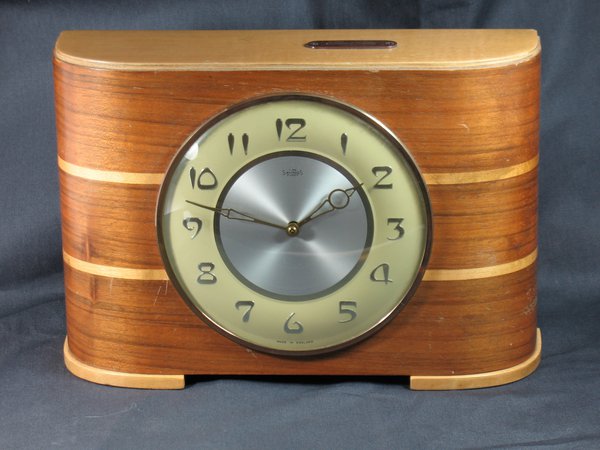Money saving time
This post was written by David Thompson
There would be a knock at the door and my mother was busy. She would say 'that will be the insurance man – answer the door and give him this money and tell him the number is 16251'.
Many of us remember these numbers rather in the same way that anyone who did national service or served in the regular armed forces will surely remember their ID number.
In 1954 the Time Savings Clock Company Limited and Metamec of Dereham applied for a patent for a clock which would only go when coins were placed in a slot in the top of the case. Two florins weekly it says on the coin slot in the case top.
For people on insurance schemes with companies like the Co-operative in the 1950s, four shillings was quite a lot on money to put aside each week. The idea of the clock was to help people hold on to their money to pay the premium each week.


The system was invented by William Arthur Pitt and the patent was granted to the Time Savings Clock Company of Manchester (no.772,762). The mechanism consisted of a series of levers and wheels which arrested the going of the clock to which it was fitted until coins were inserted to release it and thus allow the clock to run.
These coins, after operating the levers would fall into the space at the bottom of the clock case, covered by a wooden panel which fitted over a stud and was closed by a wire and lead seal applied by the insurance man. When he called he would cut the seal, empty out the money and re-seal the back until his next visit – simple.

A full account of these clocks and many more everyday clocks can be found in Clifford Bird’s book – Metamec Clock Maker Dereham published in 2003 by the Antiquarian Horological Society.